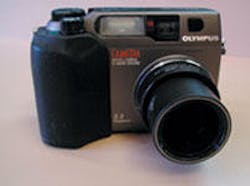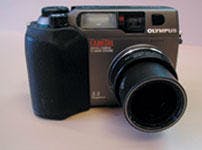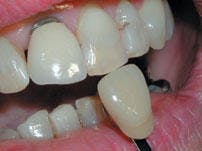Improving education and communication in the digital age
Utilizing technology to enhance patient care and increase case acceptance.
by Barry F. McArdle, DMD
Educated dental patients are the most able to effectively make use of dental services. How we convey our knowledge is just as important as the information itself. It is with this knowledge that we help patients understand what optimal oral health is and how to attain it. Improving their oral condition through dental treatment also challenges our communication skills. When we provide patients with indirect restorations, we must communicate our intentions to the lab technician so that the results meet with our own expectations as well as theirs. New technologies that can support dentists in the pursuit of these goals are on the horizon .
While many dental offices are computerized, the majority do not gain the full benefit of all the available options. These benefits include: the development and maintenance of a practice Web site, communicating with patients and the dental laboratory via email, educating patients through desktop publishing, and much more. This under-utilization can hinder the doctor's ultimate ability to achieve those previously discussed goals. Dentists who grasp the significance of this new technology and learn to use it adroitly will have a distinct advantage in their efforts to achieve a better relationship both with patients and laboratory technicians.
Web sites
A practice Web site is an invaluable tool for patient recruitment, and more importantly, as a resource for existing patients and the public at large. Preprinted sheets that describe the various conditions, procedures, and situations encountered in the normal course of dental treatment are an essential means of effective patient communication. In building my own site, I adapted the information sheets created for my office as content for the site. These sheets cover a wide range of topics including oral medicine, prevention, restorative dentistry, prosthetics, and more.
Content is the most important aspect of Web site development. Your Web site content should include links to other relevant sites, before and after photographs of both aesthetic cases and common procedures, and explanations of pertinent issues affecting dental practice such as managed care vs. the fee-for-service model or direct reimbursement. Even those visitors who currently have a regular dentist may refer others to you after visiting your site if they have been impressed with the quality and quantity of the information it contains. Keep your site updated with new information and techniques as they are incorporated into your practice. Visitors to your Web site should be able to email you and have the ability to email your site to friends, relatives, and coworkers. You also should be able to collect the email addresses of visitors to your site with a visitor's book they can sign, or by some other means. Obtaining email addresses from your existing patients is absolutely vital. They can be assimilated into a newsletter mailing list sent regularly to your patients.
Email
Email is the most useful means of communicating in-depth information to your patients when they are between appointments. It also is an excellent way to follow up with patients after a difficult procedure when you think a phone call may be too intrusive. It is efficient, flexible, and highly cost-effective; an Internet service fee is the only charge incurred for unlimited communication with your patients at any time you choose. This, plus the fact that it is virtually instantaneous, makes email the communication tool of choice. Emails can take the form of announcements, newsletters on pertinent topics like the perio-cardio connection, or to highlight new procedures and materials such as smile brightening or metal-free indirect restorations.
If you use information sheets produced on a word processing program like Microsoft Word, and save those files on either the hard drive or a removable disk drive, you can easily adapt them into your emails to patients. They can be used in their current form or sent as attachments.
Practitioners also can insert photographs into the attachments, which helps to emphasize the points that you want to make. If you have 35mm slides of "success stories," these can be scanned into digital format and included in an email document. Digital scans also can be an enhancing feature for Web sites. More conveniently, clinical photographs taken with a digital camera can be downloaded directly onto your computer and manipulated in a variety of programs to achieve your message.
Digital photography
Digital cameras are a quantum leap in the dentist's informational arsenal. The first models could not match the image quality routinely accomplished with 35 mm equipment. Advancements in digital camera technology mean performance that is almost indistinguishable from 35 mm and more than sufficient for most clinical needs. A resolution of about two megapixels or higher is required to obtain clinically suitable images. The advantages of working with a digital camera as opposed to a 35 mm model are threefold. A visual display on the back of the camera allows practitioners to review photographs immediately. If the images are not acceptable, they can be erased and retaken on the spot. Using the visual display instead of a viewfinder can be somewhat disorienting at first, but allows for superior aim and focus. Most practitioners quickly adjust. You will never purchase or develop film with a digital camera. All information registered through the camera's lens is recorded onto a digital medium within the camera called a "smart card" which stores all pictures for transfer to a computer or directly to a printer. Transferring images can be accomplished by either plugging a cable into the camera for output to the hardware or by removing the smart card from the camera and plugging it into a "smart card reader." I prefer the cable output to avoid any possible damage that may occur in handling the smart card, which is a relatively expensive item. Most notably, dentists can manipulate images in a number of ways to augment their educational and communications value far beyond what is possible with conventional 35 mm slides. Once transferred to the computer, practitioners can attach pictures to emails for communication with patients or laboratory technicians. Images also can be inserted into MS Word documents as graphic accompaniment to text or imported into desktop publishing programs such as Microsoft Publisher to depict specific procedures and materials.
Laboratory communication
Shade matching may well be the most difficult phase of fabricating indirect restorations in the laboratory. Despite the lengths to which dentists go in detailing laboratory authorizations, the finished restoration often does not realize the doctor's original notion. Photography can be an extremely useful adjunct to written prescriptions in relating shade values for laboratory cases. Digital pictures can make this previously cumbersome facet of shade selection a reality in everyday practice. A single shade tab often will not convey the entire tonal palate necessary to produce an aesthetically balanced restoration. When I attempt to match shades for aesthetically sensitive full-coverage restorations, I always take three shades — gingival, body, and incisal. For glass polymer inlay/onlay restorations, I take body and incisal shades. My personal camera is a Lester A. Dine, Inc. package featuring a modified Olympus C-3000Z camera. I take clinical photographs with each tab in the mouth. I also draw a shade diagram on the written prescription listing these shades and send it to the laboratory with the case. Before the case arrives at the laboratory, I download the shade photographs into a file created in Microsoft Word specifically for the purpose. I then email the now patient-specific file to my laboratory, where it is printed out with a high-resolution printer and given to the ceramist handling the case. The technician can use this additional information to achieve a more aesthetically correct result. Taking shade pictures adds about five minutes to the patient's visit. The total effort takes less than ten minutes.
Desktop publishing
As the saying goes, "A picture is worth a thousand words." This is particularly true when educating patients about dental treatment. My experience shows that patients are visual learners; they understand and respond more favorably to treatment recommendations presented with a pictorial component. Programs such as Microsoft Publisher allow you to incorporate text and visuals into a signature graphic design. In my opinion, there is no more powerful way to communicate the rationale and expected results of dental treatment to your patients. In my practice, I have compiled illustrated information sheets into three separate albums representing different phases of dentistry. One involves aesthetics, another concerns dental implants, and the third describes specific procedures and materials. An example from my aesthetic album is a page that depicts before-and-after images of a patient who had her defective amalgam restorations replaced with MicroDental Lab's belleGlass. My other two albums contain similar pages detailing implant cases and specific procedures such as core build-ups. For ease of operation, I have produced templates for each album into which I simply plug in pictures and text as cases are completed. It is most effective when you fabricate such documents using pictures of procedures that you yourself have performed. I also have designed a handout to give our patients when treatment is completed as a reminder of the improvements as well as to document the outcome for my own records. This can be a tremendous marketing tool when your patients show these mementos to others. You may also include these pages in email newsletters to patients; however, they do take considerable time to download through all but the quickest Web connections. Such large files may frustrate patients with slower connections.
The Internet
The power of the Internet as an information resource cannot be overestimated. Searching the Internet and tapping into its vast amount of information is a key health care resource. Because of the huge amounts of data involved, I recommend either Digital Subscriber Line (DSL) or cable access. DSL allows users to go online at appreciably higher speeds than regular dialup service. A cable link-up can achieve the same speeds as DSL; in some cases it is faster because of its superior bandwidth. Cable access also won't monopolize a telephone line. I have a DSL hook-up in my office. On any given day, I communicate with colleagues or laboratory technicians and review published research, view oral pathology databases, check on the status of laboratory cases, download reference materials, verify prescription guidelines for medication, and much more. It is important, however, to regard information retrieved on the Internet circumspectly. Some of the knowledge sources on the Web are neither as well-regulated nor held as accountable as the print journals we have come to trust and rely on. Just as you don't believe everything you read, so should you not take everything you see on the Internet as fact. For this reason, I tend to consult only those sites affiliated with institutions and individuals that I know and respect. Even with these limitations, the Web is an invaluable resource for dental practitioners.
The digital age offers dentistry advantages that were unforeseen only a few years ago. Recognizing the implications of these new tools and utilizing them to their full potential is in the best interests of both dentists and patients. The challenge is to make this new reality one that all doctors can comprehend and embrace.



